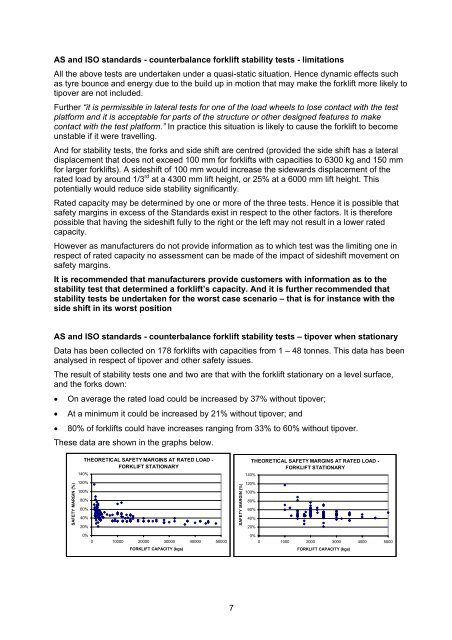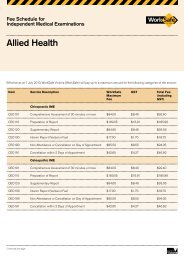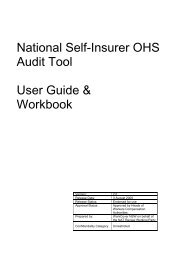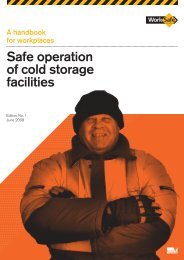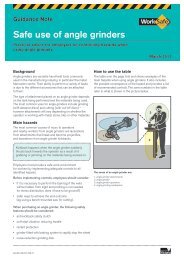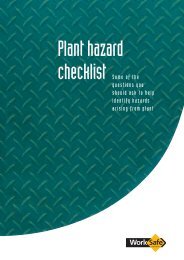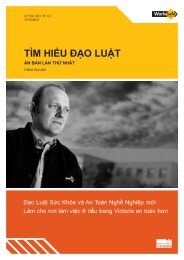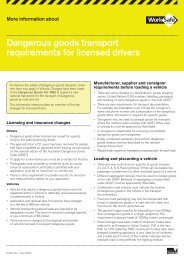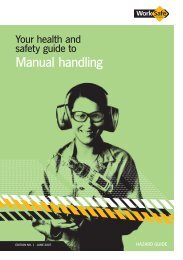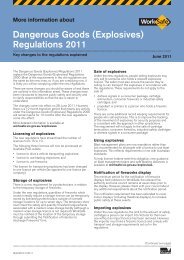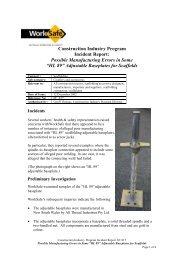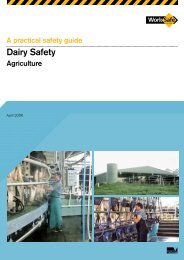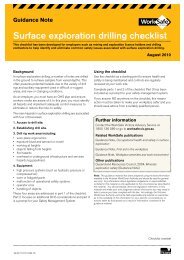Forklift stability and other technical safety issues - Monash University
Forklift stability and other technical safety issues - Monash University
Forklift stability and other technical safety issues - Monash University
You also want an ePaper? Increase the reach of your titles
YUMPU automatically turns print PDFs into web optimized ePapers that Google loves.
AS <strong>and</strong> ISO st<strong>and</strong>ards - counterbalance forklift <strong>stability</strong> tests - limitationsAll the above tests are undertaken under a quasi-static situation. Hence dynamic effects suchas tyre bounce <strong>and</strong> energy due to the build up in motion that may make the forklift more likely totipover are not included.Further “it is permissible in lateral tests for one of the load wheels to lose contact with the testplatform <strong>and</strong> it is acceptable for parts of the structure or <strong>other</strong> designed features to makecontact with the test platform.” In practice this situation is likely to cause the forklift to becomeunstable if it were travelling.And for <strong>stability</strong> tests, the forks <strong>and</strong> side shift are centred (provided the side shift has a lateraldisplacement that does not exceed 100 mm for forklifts with capacities to 6300 kg <strong>and</strong> 150 mmfor larger forklifts). A sideshift of 100 mm would increase the sidewards displacement of therated load by around 1/3 rd at a 4300 mm lift height, or 25% at a 6000 mm lift height. Thispotentially would reduce side <strong>stability</strong> significantly.Rated capacity may be determined by one or more of the three tests. Hence it is possible that<strong>safety</strong> margins in excess of the St<strong>and</strong>ards exist in respect to the <strong>other</strong> factors. It is thereforepossible that having the sideshift fully to the right or the left may not result in a lower ratedcapacity.However as manufacturers do not provide information as to which test was the limiting one inrespect of rated capacity no assessment can be made of the impact of sideshift movement on<strong>safety</strong> margins.It is recommended that manufacturers provide customers with information as to the<strong>stability</strong> test that determined a forklift’s capacity. And it is further recommended that<strong>stability</strong> tests be undertaken for the worst case scenario – that is for instance with theside shift in its worst positionAS <strong>and</strong> ISO st<strong>and</strong>ards - counterbalance forklift <strong>stability</strong> tests – tipover when stationaryData has been collected on 178 forklifts with capacities from 1 – 48 tonnes. This data has beenanalysed in respect of tipover <strong>and</strong> <strong>other</strong> <strong>safety</strong> <strong>issues</strong>.The result of <strong>stability</strong> tests one <strong>and</strong> two are that with the forklift stationary on a level surface,<strong>and</strong> the forks down:• On average the rated load could be increased by 37% without tipover;• At a minimum it could be increased by 21% without tipover; <strong>and</strong>• 80% of forklifts could have increases ranging from 33% to 60% without tipover.These data are shown in the graphs below.SAFETY MARGIN (%)140%120%100%THEORETICAL SAFETY MARGINS AT RATED LOAD -FORKLIFT STATIONARY80%60%40%20%0%0 10000 20000 30000 40000 50000FORKLIFT CAPACITY (kgs)SAFETY MARGIN (%)140%120%100%THEORETICAL SAFETY MARGINS AT RATED LOAD -FORKLIFT STATIONARY80%60%40%20%0%0 1000 2000 3000 4000 5000FORKLIFT CAPACITY (kgs)7


